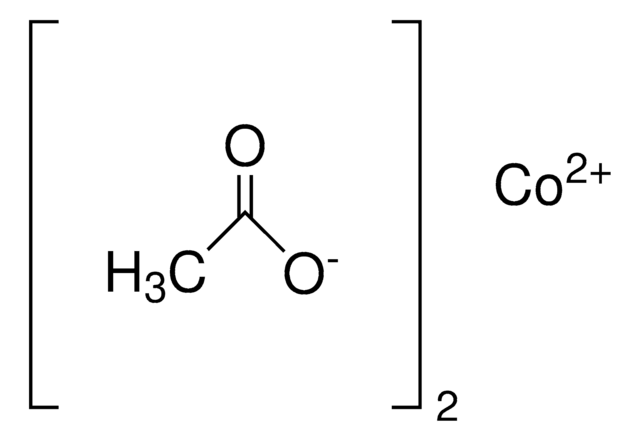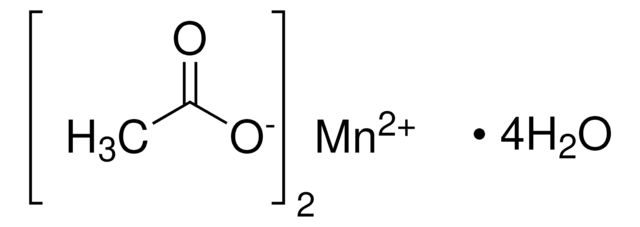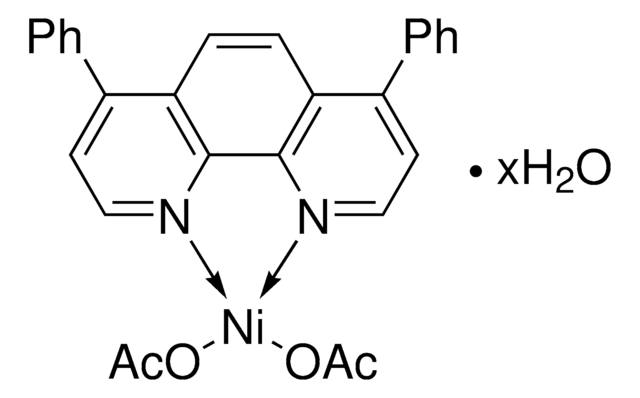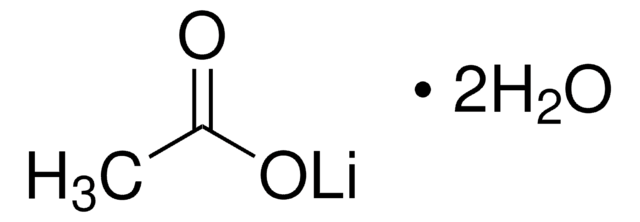244066
Nickel(II) acetate tetrahydrate
98%
Sinônimo(s):
Acetic acid nickel(II) salt
About This Item
Produtos recomendados
Nível de qualidade
Ensaio
98%
Formulário
powder
adequação da reação
core: nickel
reagent type: catalyst
densidade
1.798 g/mL at 25 °C (lit.)
cadeia de caracteres SMILES
[H]O[H].[H]O[H].[H]O[H].[H]O[H].CC(=O)O[Ni]OC(C)=O
InChI
1S/2C2H4O2.Ni.4H2O/c2*1-2(3)4;;;;;/h2*1H3,(H,3,4);;4*1H2/q;;+2;;;;/p-2
chave InChI
OINIXPNQKAZCRL-UHFFFAOYSA-L
Procurando produtos similares? Visita Guia de comparação de produtos
Descrição geral
Aplicação
- Used as a precursor material in the hydrothermal synthesis of nanostructured nickel diselenide (NiSe2).
- Used as a precursor in the synthesis of the salamo-based dinuclear nickel(II) complex.
- Used as a precursor material in the synthesis of nickel oxide (NiO) via sol-gel method. Nickel oxide can be tailored for various applications, including electrochromic devices, gas sensors, and lithium-ion batteries.
Palavra indicadora
Danger
Frases de perigo
Declarações de precaução
Classificações de perigo
Acute Tox. 4 Inhalation - Acute Tox. 4 Oral - Aquatic Acute 1 - Aquatic Chronic 1 - Carc. 1A - Muta. 2 - Repr. 1B - Resp. Sens. 1 - Skin Sens. 1 - STOT RE 1
Código de classe de armazenamento
6.1C - Combustible acute toxic Cat.3 / toxic compounds or compounds which causing chronic effects
Classe de risco de água (WGK)
WGK 3
Ponto de fulgor (°F)
Not applicable
Ponto de fulgor (°C)
Not applicable
Equipamento de proteção individual
Eyeshields, Faceshields, Gloves, type P3 (EN 143) respirator cartridges
Escolha uma das versões mais recentes:
Já possui este produto?
Encontre a documentação dos produtos que você adquiriu recentemente na biblioteca de documentos.
Os clientes também visualizaram
Nossa equipe de cientistas tem experiência em todas as áreas de pesquisa, incluindo Life Sciences, ciência de materiais, síntese química, cromatografia, química analítica e muitas outras.
Entre em contato com a assistência técnica













